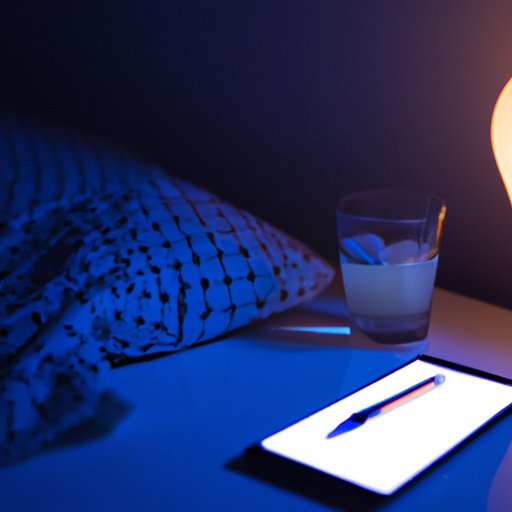
I. Introduction
Sleep is essential for good health and well-being. Quality sleep helps us to feel refreshed, energized, and ready to face the day ahead. Unfortunately, many people struggle to get enough quality sleep due to a disrupted sleep schedule. Sticking to a regular sleep schedule can be key to getting the sleep you need. In this article, we will explore some tips and tricks to help you fix your sleep schedule and get the restful sleep you deserve.
II. Create a Sleep Schedule and Stick to It
A regular sleep schedule is crucial for maintaining good sleep hygiene. Going to bed and waking up at the same time every day helps to regulate your internal sleep clock, also known as the circadian rhythm. To start improving your sleep schedule, set a bedtime that allows you to get at least 7-8 hours of sleep each night. Gradually shift your sleep schedule by 15-30 minutes each night until you reach your ideal sleep time.
Sticking to a regular sleep schedule has a lot of benefits, including better sleep quality, more energy during the day, and improved mood.
III. Limit Exposure to Electronics Before Bed
Exposure to blue light emitted by electronic devices like smartphones, laptops, and TVs can suppress the body’s production of the hormone melatonin. Melatonin is a natural sleep-inducing hormone that helps us feel drowsy and fall asleep. Limiting your use of electronics or using blue light filters can help reduce the disruption to your body’s melatonin production. Alternatives to electronics before bed include reading a book, taking a relaxing bath, or engaging in gentle stretching or yoga exercises.
IV. Establish a Bedtime Routine
A consistent bedtime routine can help signal your body that it’s time to start winding down for the night. Bedtime routines can include activities like taking a warm bath, reading a book, or listening to calming music. Experiment with different activities to find what works best for you. Consistency is key when establishing a bedtime routine, so try and stick to the same routine each night.
V. Create a Sleep-Conducive Environment
Your sleeping environment can have a big impact on the quality of your sleep. Keep your bedroom cool, dark, and quiet to create a peaceful atmosphere for sleep. Invest in comfortable bedding and a supportive pillow to help you relax and feel comfortable. Keep your bedroom clean and clutter-free to create a calming ambiance. Finally, consider investing in blackout curtains or a white noise machine to further enhance your sleep environment.
VI. Avoid Caffeine and Alcohol Before Bed
Caffeine and alcohol can both disrupt sleep patterns and make it harder to get quality sleep. Avoid or reduce your caffeine intake before bedtime and limit alcohol consumption to earlier in the evening. Caffeine alternatives include decaf coffee or tea, herbal tea, or warm milk. Relaxation techniques like deep breathing or meditation can also help you unwind before bed.
VII. Exercise Regularly
Regular exercise has been shown to improve both sleep quality and duration. However, it’s important to avoid vigorous exercise too close to bedtime as it can stimulate your body and make it harder to fall asleep. Instead, aim to exercise earlier in the day or in the afternoon to promote better sleep at night. Even gentle exercise like walking or yoga can be beneficial for improving sleep.
VIII. Conclusion
Fixing your sleep schedule can take time and effort, but the benefits of good quality sleep are worth it. By sticking to a regular sleep schedule, limiting exposure to electronics before bed, creating a bedtime routine, establishing a sleep-conducive environment, avoiding caffeine and alcohol before bed, and exercising regularly, you can improve the quality and duration of your sleep. Remember to experiment with different methods to find what works best for you.




